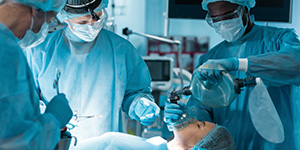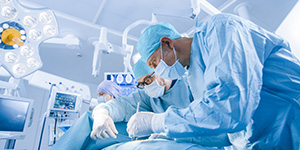In healthcare, ensuring patient safety and comfort is paramount. Among the many factors contributing to patient well-being, maintaining an optimal body temperature is crucial, particularly during surgical procedures and recovery. For healthcare and supply chain professionals in the early stages of the buyer’s journey, understanding the importance of patient warming devices is essential to making informed purchasing decisions. These devices are critical in preventing hypothermia and its associated complications, making them indispensable in any clinical setting.
Impact of Hypothermia
Hypothermia, defined as a drop in core body temperature below 36°C (96.8°F), is a common occurrence during surgical procedures due to anesthesia-induced reduction in metabolic rate and heat loss in the operating room. If not addressed promptly, hypothermia can lead to serious implications such as increased surgical site infections (SSIs), coagulopathy, cardiovascular stress, and prolonged hospital stays. Understanding these risks is essential for healthcare and supply chain professionals, as it highlights the importance of investing in effective patient warming devices.
The Role of Patient-Warming Devices
Patient warming devices are designed to maintain and stabilize a patient’s body temperature during the perioperative and postoperative phases. These devices, which include warming blankets, forced-air warming systems, and warmed intravenous fluids, play a vital role in enhancing patient outcomes. Hypothermia can significantly increase the risk of surgical site infections by impairing immune function, making patients more susceptible to infections. Maintaining normothermia is crucial to reducing this risk and ensuring better postoperative outcomes. Cold-induced coagulopathy, where hypothermia impairs blood clotting mechanisms leading to increased bleeding during and after surgery, is another critical concern that effective temperature management can prevent.
Hypothermia also places additional stress on the cardiovascular system, potentially leading to arrhythmias and other cardiac issues. Keeping patients’ warm helps minimize these risks, helping aid smoother surgical procedures and recoveries. Furthermore, patients experiencing hypothermia often have longer recovery periods and extended hospital stays. By maintaining a stable body temperature, healthcare providers can promote faster healing and reduce the length of hospital admissions.
Benefits of Patient Warming Devices
Patient warming devices are used across different phases of medical care. During the preoperative phase, forced-air warming systems are commonly used. These systems blow warm air through a blanket covering the patient, effectively raising body temperature before surgery. Administering warm intravenous fluids is another method to prevent hypothermia, warming the patient internally and helping maintain normothermia during the perioperative phase.
During surgery, warming blankets and mattresses ensure the patient remains warm throughout the procedure, significantly reducing the risk of hypothermia. Heated humidified anesthesia gases prevent heat loss through the respiratory tract, which is particularly important during lengthy surgeries. In the postoperative and intensive care phases, active warming systems provide continuous warmth, aiding in faster recovery and maintaining patient comfort. Continuous temperature monitoring is also crucial for prompt intervention, ensuring any drop in temperature is quickly addressed. One notable example is the KoZee Patient Warming System, known for its efficiency and patient-warming reliability in clinical applications.
For healthcare professionals considering patient warming solutions, AstoPad and Normo-Temp are leading options. The AstoPad system offers advanced technology for precise temperature control, while Normo-Temp provides reliable warming solutions for various clinical settings. These products are designed to meet the high standards of patient care, ensuring both safety and comfort.
Conclusion
Patient warming devices offer numerous benefits that healthcare professionals should consider when making purchasing decisions. These devices significantly enhance patient comfort, reducing the stress and discomfort associated with hypothermia. By maintaining normothermia, they contribute to better surgical outcomes, including fewer complications and infections. Effective temperature management leads to shorter hospital stays and fewer complications, ultimately reducing healthcare costs. Patients experiencing higher comfort levels and better recovery rates also report greater satisfaction with their healthcare experience.
For healthcare and supply chain professionals, patient warming devices are essential in modern healthcare. They play a critical role in preventing hypothermia and enhancing patient outcomes. Preventing hypothermia is crucial for patient safety, comfort, and overall healthcare efficiency. Implementing effective warming strategies is a necessary step in achieving these goals. Making an informed decision involves understanding the specific needs of your healthcare facility, the types of warming devices available, and the evidence supporting their use.
If you have any questions or need further information, please do not hesitate to contact us.









